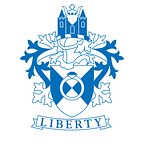Digital Inclusion Triage Tool — Design Sprint
Our deliverables in this design sprint were:
- Map the flow of the user journey
- Design the questions and answers to identify the needs
- Design and Wireframe the interface for triage tool
- Design and Wireframe the user interfaces for the directory
- Carry out internal testing
- Design the search tool associated with directory
We have designed the question screens to identify the digital inclusion need and carried out internal testing.
We have also designed the interface for the directory.
Several challenges have so far emerged in the course of designing the digital triage tool. Although many challenges were already known and anticipated from the discovery phase of the project, the field of digital inclusion raises a significant number of complex scenarios concerning the user’s journey and experience.
Two of these we have chosen to highlight here as they illustrate these complexities well.
Design challenge 1 — Skills and capabilities questions
The first challenge is associated with how the triage tool differentiates between different levels of user capability. In the early stages of the user journey this presents an enormously important point of differentiation, essential to ensuring that appropriate resources can be highlighted and provided to the user, or those assisting them. The most basic digital skills are heavily intertwined with establishing if the user has problems with connectivity. This might be due to their device not working (not having an active connection), not knowing how to connect their device to the internet, or not understanding what to do with their device (not knowing how to open and operate the browser or internet application for example). The resources for these users generally involve an at-home intervention, or a drop-in service provided by a community organisation. Digital Buddies and Digital Champion programmes are essential resources for these users.
Distinct challenges arise in presenting the appropriate questions to users at this early stage of the user journey; the language needs to be exceptionally clear, and should be directly related to the barriers the user might be facing. User persona research indicates that those experiencing digital exclusion can easily be put off from pursuing support, through confusion, disinterest and a feeling of technology not being ‘for them’.
In addition, they might not themselves know what the problem is that they are faced with, and not have the knowledge or ability to convey the issue to those they have sought help from. Although they might at first appear like very similar lines of question, ‘are you able to access the internet’, and ‘do you want to learn how to use the internet’, are fundamentally addressing very different users, barriers and resources that need to be made available.
As we develop our questions and explainer texts we will be experimenting with multiple choice options for helping identify the specific issues these users may be facing, to reduce the potential for confusion and help guide the user through the full triage process.
Design challenge 2 — Access and support needs
The second challenge also appears obvious at first and was discussed in detail during the Discovery phase, but presents many additional layers of complexity. It has to do with how the user is best able to identify themselves as having specific access and support needs, or as being a member of a specific community or demographic group.
Several interventions provided by the local community and voluntary sector offer services and support to citizens from different countries and geographic areas, to those with specific disabilities such as learning difficulties or dementia for example, or to different age groups.
The point at which the triage process attempts to capture these specific user details is very much related to both the desired user journey and experience of the tool, as well as its relationship to the way in which appropriate resources are defined and presented to the user.
How the tool maintains its focus on supporting digital inclusion, whilst complementing the provision of local area signposting services also needs consideration.
We will be exploring how the directory and the triage questions best work together to provide local authorities and community stakeholders with better opportunities to promote these essential services, and we will also be examining how the technical foundation provided by the tool and directory can be easily utilised to deliver additional use-cases for signposting, tailored for users needing local resources and interventions specific to their needs.
In both of these cases, ascertaining basic support needs and defining user accessibility, we will be engaging with a broader community of service providers and stakeholders to improve our understanding of their experiences in engaging users and how best to signpost and refer appropriate services.
What’s next?
We’ll be working through the design challenges, carrying out user testing and iterating the designs before moving onto development.
We are running a session on Wednesday 27th April at 11am to discuss our design challenges and get input on how we could resolve these.
If you would like to attend this session please get in touch with Tracy Cox tracy.cox@havering.gov.uk
